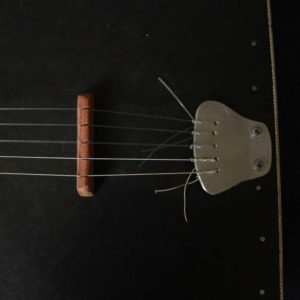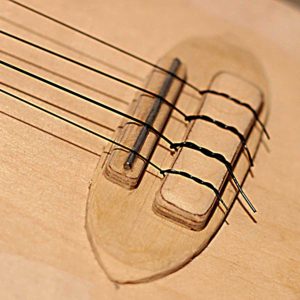The bridge holds and guides the strings on the body’s top. While building your bridge, keep following things in mind:
- The bridge should be light! The heavier it becomes, the more effort it takes from the string to make it vibrate, which lowers the sound. A slim nail, hard wood, or bone are good options in here, but avoid to use big heavy metal screws or similar stuff.
- Use strong material, that absorbs as less vibration as possible. Extreme negative example: a rubber bridge would absorb almost all the sound.
- Choose the right height: Is the bridge too low, the strings will snare on the fretboard, while playing. If it’s too high, it reduces the playing comfort, because of the longer traveling time from string to fretboard. It can lead as well to mistuned sound, because the tension of the string is decently rising while pressing it down.
- Take care of having a proper last contact point, before the string leave the bridge to the nut. Otherwise, you might face with a snaring sound.
- Find the right positioning while knocking on the body’s surface. Install the bridge where you hear the best/ loudest sound.
Floating bridge
The strings are hold by a separate string holder, which is attached at the end of the body. The strings are leaded the over the bridge, which is placed on the body.
This method is required for banjo like bodies (when you pull the strings over a „drum“), but works in almost all cases fine.
- When you can hardly glue or screw the bridge to the body, this method is yours!
- Some low budget strings can be too short to reach the string holder.

